Overview
Discover the hidden gems of the Himalayas on this immersive 9-day Bhutan tour that takes you far from the usual tourist trails. Designed for curious travelers, this Bhutan off the beaten path journey leads you through remote valleys, lesser-known villages, and sacred sites untouched by mass tourism. From peaceful nature hikes to authentic cultural encounters, every day offers a deeper connection to Bhutan’s serene landscapes and spiritual heritage. If you seek a truly meaningful and unspoiled adventure, this unique tour reveals Bhutan’s best-kept secrets.
Tour Highlights
- Immerse yourself in Bhutan's vibrant local communities and traditional way of life.
- Experience breathtaking views of pristine forests, mountain ranges, and picturesque paddies.
- Challenge yourself with trekking through remote regions and enjoy the serenity of the mountains.
- Visit significant heritage sites and impressive dzongs with cultural and religious importance.
General Information
Duration: 9 days/8 nights
Start/End: Guwahati/Guwahati
Tour Route: Guwahati - Samdrup Jongkhar - Trashigang - Radhi - Merak - Sakteng - Trashigang - Samdrup Jongkhar - Guwahati
What's Included
- Transfers between airports, hotels, and scenic spots in a private air-conditioned vehicle with a driver and English-speaking guide
- English-speaking tour guide in each city, who will accompany you throughout your stay and provide expert local insights
- Accommodation with daily breakfast as per the detailed itinerary
- Entrance fees and permits (if applicable)
- Bottled drinking water
- Domestic air tickets
- English-speaking local tour guide in each city
- Entrance fees and zone fees for all places mentioned in the itinerary
- Transfers and sightseeing by private air-conditioned car
What's Excluded
- International flights and airport taxes (Visa)
- Personal travel insurance
- Other meals not indicated above
- Surcharges and compulsory dinners (if any)
- Beverages in restaurants where meals are included
- Gratuities to guides and drivers
- Personal and other expenses such as porterage, bar bills, and laundry not stated in the itinerary
Detailed Itinerary of Bhutan Off Beaten Path Packages
Day 1: Arrival in Guwahati - Samdrup Jongkhar
Upon arrival in Guwahati airport, meet your private guide and transfer to the oldest town Samdrup Jongkhar also known as the gateway to Eastern Bhutan by car. It is a small but fascinating town which is a commercial hub and urban center of Eastern Bhutan. This 3-hour drive will be the most breathtaking one going through the pristine forests and admire the mountain ranges running one after another horizontally appear in and out of the drifting clouds.
Be sure to bring your camera to take magnificent photos during this journey. Upon Sadrup Jongkhar, take a rest then enjoy a cozy lunch in the local restaurant before hitting the vibrant border Samdrup Jongkhar town of Bhutan kingdom. This is also the oldest town in the country where exist at least 6 to 7 different dialects. Get a glimpse of the street town before returning to the hotel for an overnight and enjoy a welcome dinner.
Accomodations: Tailored to guest preferences (e.g., luxury, boutique, or budget)
Meals: Flexible to your taste
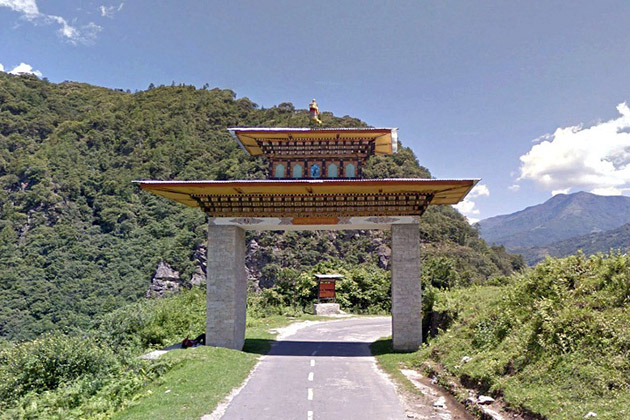

Day 2: Samdrup Jongkhar - Trashigang
After breakfast in the hotel, visit some outstanding sites in Samdrup Jongkhar before taking a north drive to Trashigang. This morning sightseeing begins with the first stop in Samdrup Jongkhar Dzong - one of the lastest dzongs in the country well-known for its location. Unlike other dzongs that are built on the hill-top or between the confluence of the rivers in Paro, Trashigang or Punakha, it was built on a flat and wide area. Afterward, go ahead to the Mithun breeding farm to marvel at the best breeding of cattle in this country and witness the milk production as well as the variety of animals.
Later, transfer to Trashigang for a long drive to pass through the untouched highway with a wide range of vegetation zones on the Himalayan slopes. Gaze out at the diverse ferns, rhododendrons as well as the sleeping villages along the way. If there is time, stop for a short trip to Khaling village to learn and experience the traditional weaving culture of the Bhutanese people. Moreover, if you love the Bhutan traditional dress, here offers you a great chance to purchase authentic Bhutanese textiles.
Overnight in Trashigang.
Accomodations: Tailored to guest preferences (e.g., luxury, boutique, or budget)
Meals: Flexible to your taste
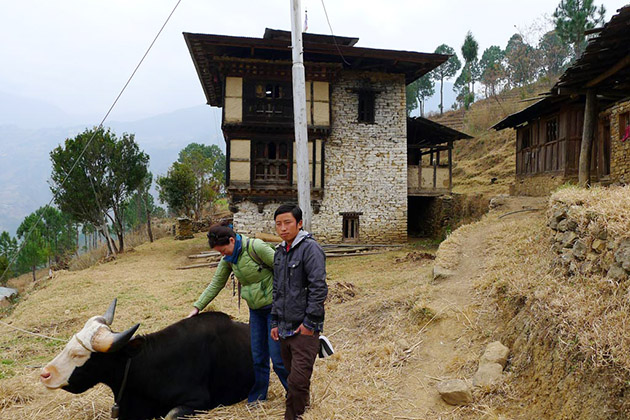
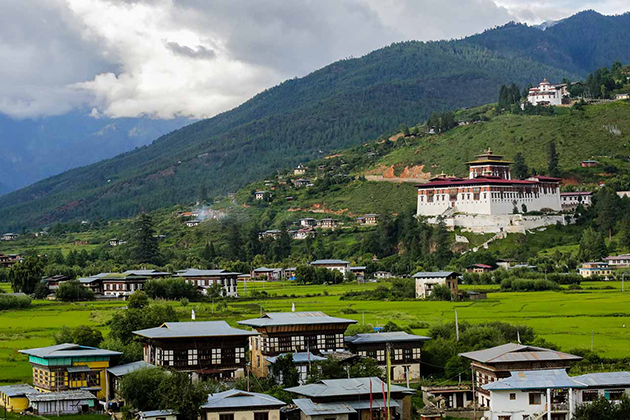
Day 3: Excursion to Radhi Village
A full day to discover the fairyland with the morning’s highlight in Trashigang Dzong-one of 20 Buddhist dzongs in the country features Bhutan’s built heritage. Situated on the top of a promontory overlooking at the mountain ranges around and the two beautiful Gamri and Drangme rivers. Here admire the colorful Buddhist paintings and carvings and learn more about the traditional arts and crafts inside the dzong.
Next, head for Gomphu Kora – the picturesque temple surrounded by magnificent terraced rice fields. If you visit Gomphu Kora in spring between the 8th and 10th of the second lunar month (often March or April), you will have a chance to join in the Gomphu Kora (or Gom Kora) Festival. This occasion attracts many people to travel to this sacred site for a night celebration and watching different mask dances.
Next, drive Eastward to visit Radhi village to behold the picturesque rice fields in the remote region, witness the fine raw-silk textiles as well as learn about the traditional weaving of clever women living in 200 households of the village. Later, return to Trashigang for an overnight.
Accomodations: Tailored to guest preferences (e.g., luxury, boutique, or budget)
Meals: Flexible to your taste
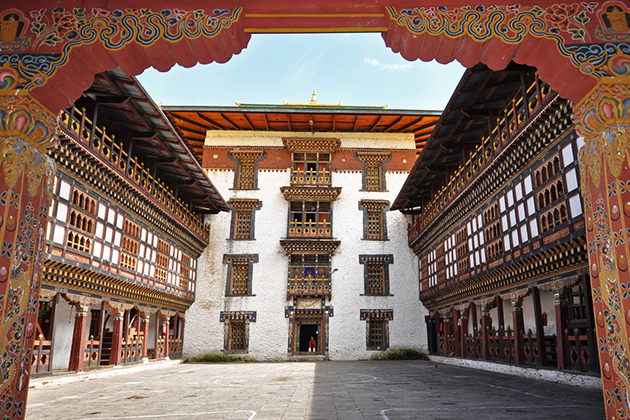

Day 4: Trashigang - Merak
This full-day enjoys the main highlight in the trek to explore Merak. Take time to indulge in the dreamy landscapes in the settlement of about thirty households, admire the gorgeous mountains overlooking the beautiful valley below.
Once you visit Merak, do not miss the chance to experience the life of a Yak herdsman with the villagers. This evening offers an option to overnight in one of the homestays to get closer to people to get the first-hand experience of culture and lifestyle in the remote village and enjoy a cozy meal with the host.
Accomodations: Tailored to guest preferences (e.g., luxury, boutique, or budget)
Meals: Flexible to your taste

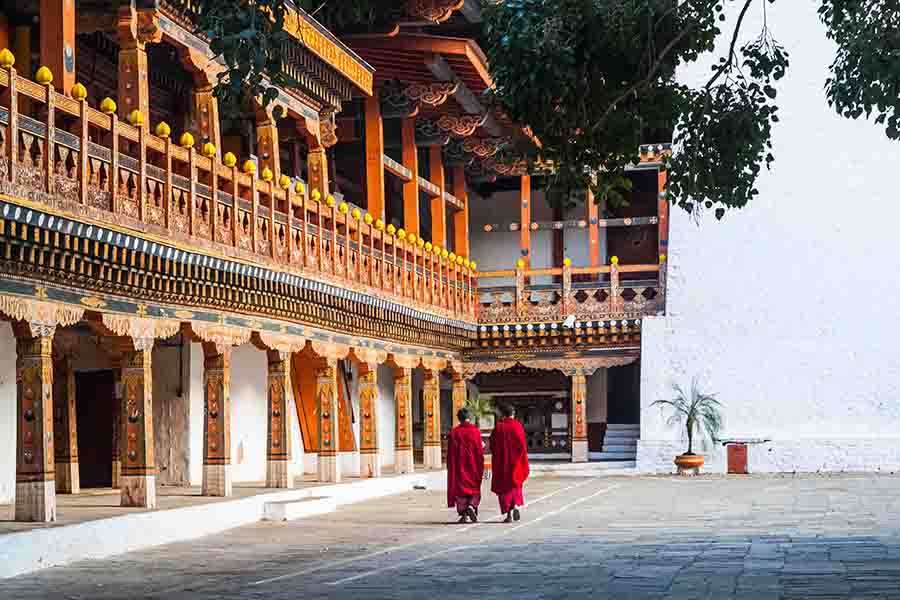
Day 5: Merak - Sakteng
Today head for a tough journey trekking to Merak – Sakteng. Along the way, be mesmerized by the spectacular mountain ranges and diverse vegetation. As soon as you reach the campsite, enjoy the picturesque rhododendron trees that surround you.
Overnight at the camp.
Accomodations: Tailored to guest preferences (e.g., luxury, boutique, or budget)
Meals: Flexible to your taste
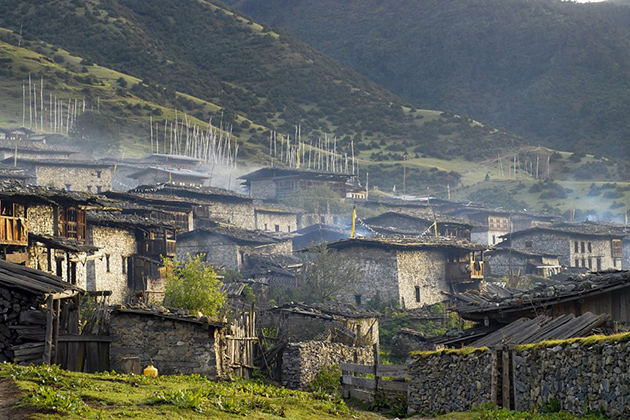

Day 6: Explore Sakten
Today’s trek route is easier to let you immerse in the beautiful aura passing through a small pass to the Sakten valley. Leave early in the morning to reach the Sakten village before lunchtime to get a chance to visit the local homes, greet the friendly people and enjoy a warm meal in the village.
Return to Trashigang in the late afternoon for overnight.
Accomodations: Tailored to guest preferences (e.g., luxury, boutique, or budget)
Meals: Flexible to your taste

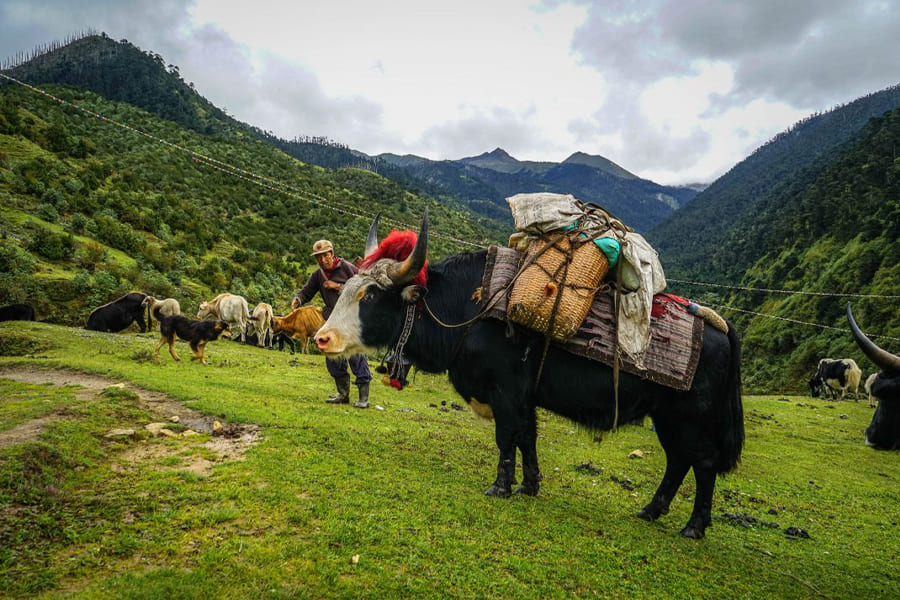
Day 7: Sakteng - Trashigang
The morning of day 6 begins with a memorable visit to Trashiyangste Dzong. Dating back to the 19th century, this is one of the oldest Dzongs in Bhutan well-known for the Buddhist statues and the legend of how Chuchuzhey (the Avalokiteshvara) came to the Dzong. Here listen to your guide about the story and the unique architecture of this sacred site.
Afterward head for a south trip to the Chorten Kora – a giant stupa in East Bhutan lies on the riverside of Kulong Chu River. The stupas were built in the 18th century by Lama Ngawang Lodro, the nephew of Shabdrung Ngawang Namgyal (the Bearded Lama) to subdue the harmful demon. This important site witness an amazing Chorten Kora festival (or Dakpa Kora) which was held annually from the 16th to the 30th of March on the 15th of the first Lunar month attracts people from different parts of the country.
Overnight in Trashiyangste.
Accomodations: Camp base
Meals: Flexible to your taste
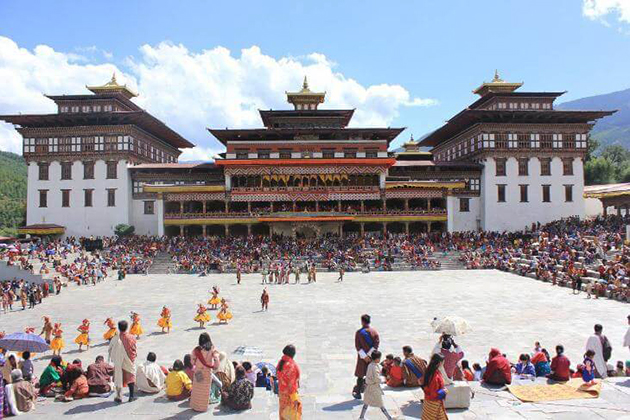
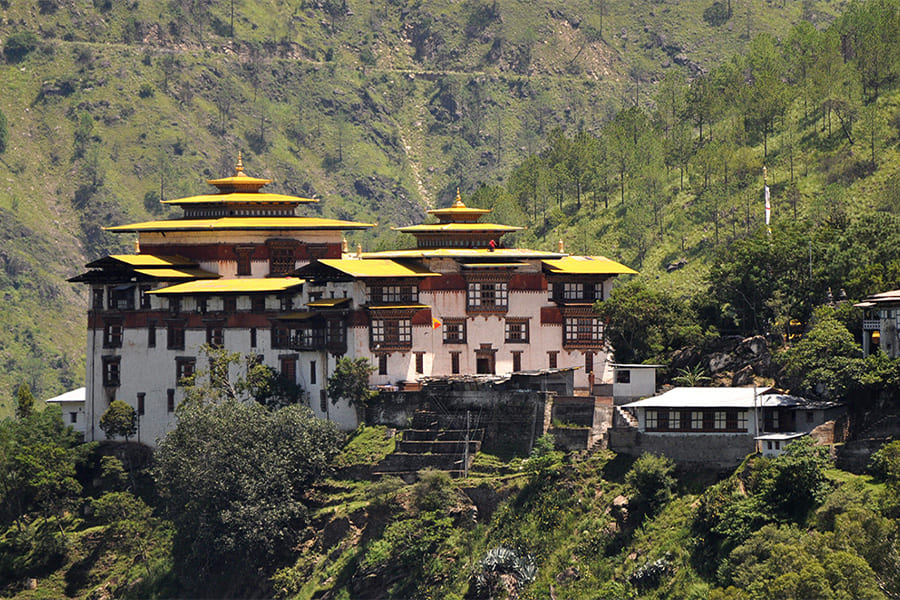
Day 8: Trashigang - Samdrup Jongkhar
We will towards Samdrup Jongkhar. Along the way, a 22-kilometer drive will take us to Kanglung, where we can visit the serene Zangdopelri Lhakhang. Continuing down the highway, we will stop at the Khaling National Handloom, a weaving center that provides an opportunity to explore and experience the vibrant weaving culture of eastern Bhutan.
Accomodations: Camp base
Meals: Flexible to your taste
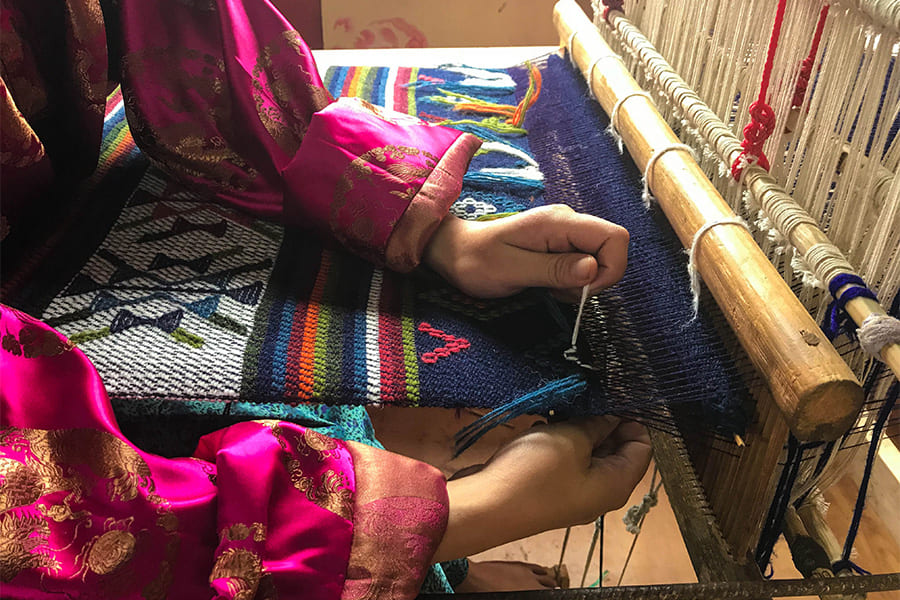
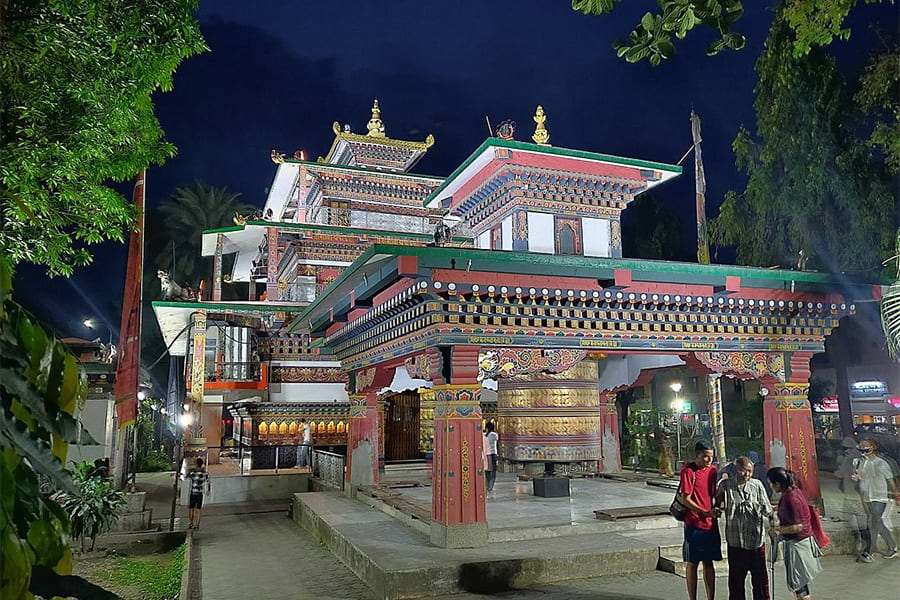
Day 9: Samdrup Jongkhar - Guwahati - End of Bhutan Tour
After breakfast, be free until the driver picks you up to transfer to the airport for a flight to your departure. Trip ends. Thank you for joining the Bhutan vacation with Go Bhutan Tours!
FAQs About Off Beaten Path in Bhutan
This tour is culture-focused with some moderate trekking. Most days involve sightseeing, village visits, and scenic drives. The Merak–Sakteng section is the most active part, with full walking days but at a steady, non-technical pace. You don’t need to be a hardcore trekker, but you should be reasonably fit and comfortable walking for several hours.
Merak–Sakteng is rated moderate:
- Walking time: about 4–6 hours per day
- Distance: typically 10–15 km per day, with some up- and downhill sections
Good general fitness (regular walking, light hikes) is enough. No technical climbing is involved.
The best time is:
- Spring: March–May (lush scenery, pleasant temperatures)
- Autumn: late September–November (clear skies, best views, more stable roads)
We normally avoid peak monsoon (Jun–Aug) due to heavier rain and possible landslides, and mid-winter (Dec–Feb) can be cold in high villages.
Homestays are clean but basic, very local experiences:
- Beds: simple mattresses with blankets (sometimes on raised platforms or thick mats)
- Heating: usually a wood stove in the main room; bedrooms may be cool at night
- Electricity: often available but can be unreliable in remote areas
- Wi-Fi: usually not available; mobile data is limited or patchy
Come prepared for a rustic, authentic village stay, not hotel-style comfort.
Yes. This itinerary is suitable and generally very safe for solo travellers, including solo female guests. You will be accompanied by a licensed local guide and driver throughout, and we work only with trusted homestays and partners in the villages. Bhutan is known as a low-crime, welcoming country, and we can arrange single rooms where possible (homestays may sometimes share common spaces).
Yes, we can cater for most dietary needs, including vegetarian, vegan, and gluten-free, as long as you tell us in advance. In remote villages, choice is more limited, but your guide and hosts will do their best with local ingredients (rice, vegetables, lentils, potatoes, etc.). We recommend you bring a few personal snacks if you have strict restrictions.
Pack for layers + modesty:
- Clothing:
- Light layers for daytime, warm fleece/jacket for cool mornings and evenings
- Waterproof jacket and possibly light rain pants (weather can change quickly)
- Footwear:
- Comfortable walking/hiking shoes with good grip for village trails
- Light sandals/flip-flops for evenings and homestays
- Cultural dress code (villages & dzongs):
- Shoulders and knees covered (no very short shorts or strappy tops)
- Avoid very tight or revealing clothes
- A scarf/shawl is handy for dzongs and temples
Also bring: hat, gloves (for cooler seasons), sunhat, sunglasses, sunscreen, small daypack, reusable water bottle, headlamp, and personal medication.

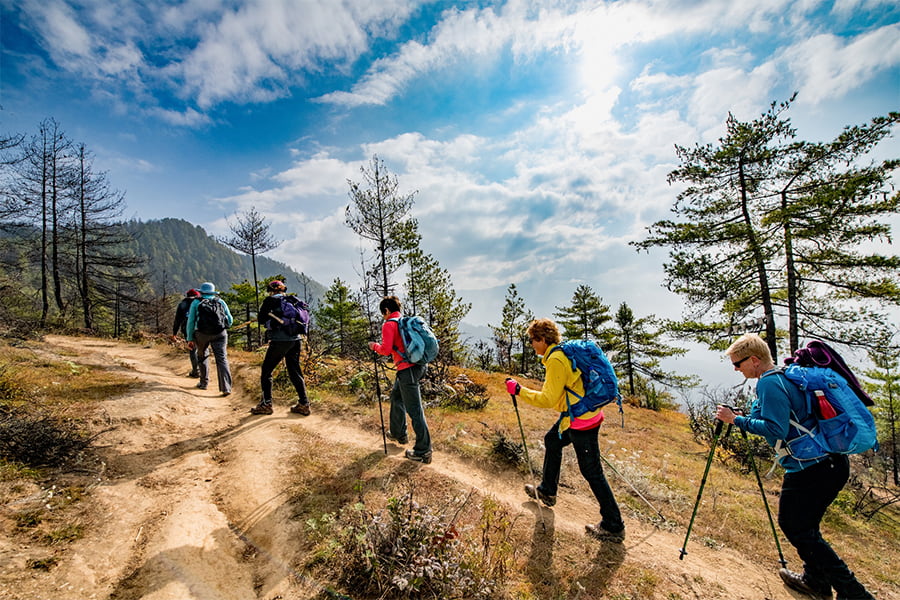

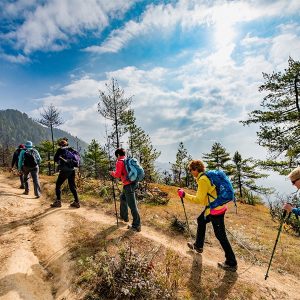
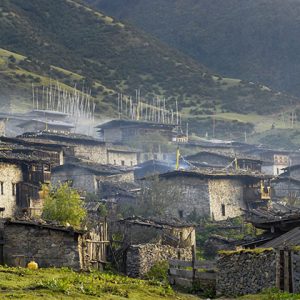
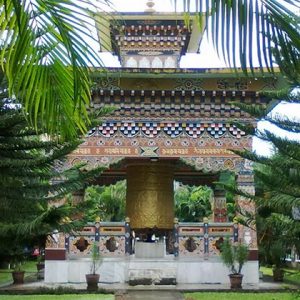
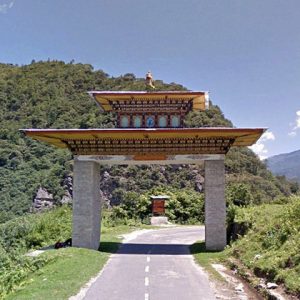
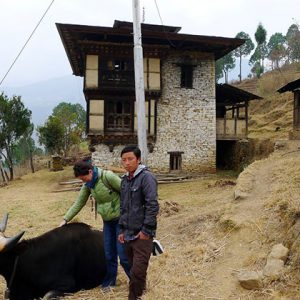
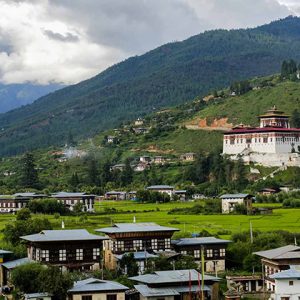

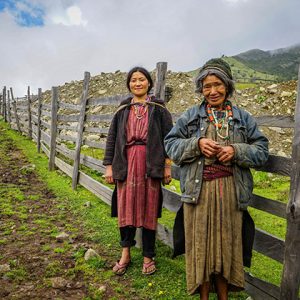
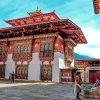

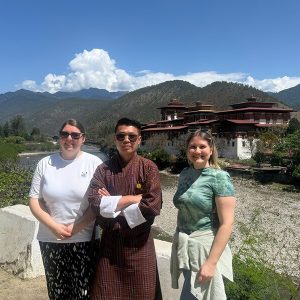
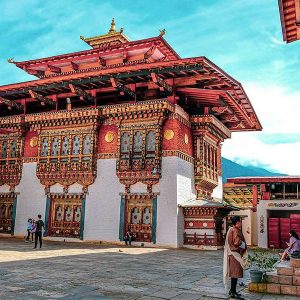
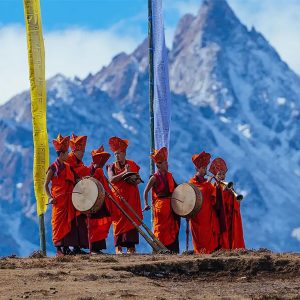
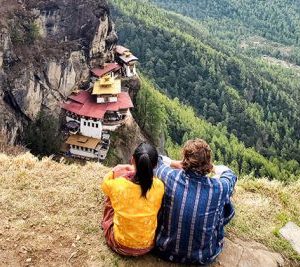


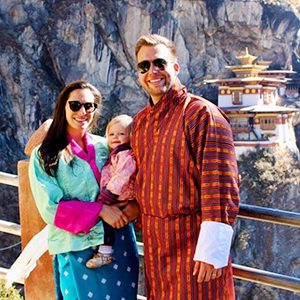
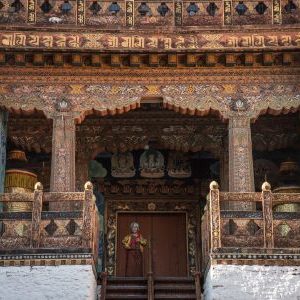

Maeve Callaghan – Ireland –
I booked this nine-day journey hoping to see Bhutan beyond postcards. Our guide led us off the beaten track to hillside hamlets, hidden monasteries and smoky farm kitchens. If you’re dreaming of bhutan off the beaten path, this itinerary feels like being quietly welcomed into everyday village life rather than passing through as a tourist.
Rowan Fletcher – Australia –
I’ve travelled a lot, but Bhutan off the beaten path felt different from day one. Children walked with us between fields, old men spun prayer wheels, and nobody rushed. Evenings by the wood stove became my favourite ritual. This truly is an off the beaten track experience for travellers who value connection over checklists.
Caleb Whitmore – USA –
I didn’t want a standard highlights tour; I wanted Bhutan off the beaten path, and that’s exactly what I got. We followed tiny farm roads, shared butter tea with a shy family, and listened to monks chanting at dusk. Being gently guided off the beaten track let us witness real village rhythms unfold around us.
Isla Pembroke – United Kingdom –
This itinerary took us so far off the beaten track that some days we didn’t see another tourist. Our guide translated jokes, explained field rituals and introduced us to his childhood friends. If you’re searching for bhutan off the beaten path instead of crowded viewpoints, this is such a rich, human way to travel.
Darius McKinnon – Canada –
Nine days of Bhutan off the beaten path felt like stepping into a long, slow story. We watched farmers threshing grain, visited a tiny hilltop temple with one resident monk, and stayed in a creaky old farmhouse. It’s not luxury in the usual sense, but for off the beaten track authenticity, it’s unbeatable.
Elodie Harrington – New Zealand –
I chose this tour because “off the beaten track” wasn’t just marketing. We walked through terraced valleys where neighbours greeted our guide by name, not by camera brand. Evenings were spent learning local card games around the bukhari. For anyone curious about bhutan off the beaten path, this felt deeply respectful and real.
Jasper Llewelyn – Wales –
What impressed me most was how naturally we slipped off the beaten track without intruding. Our guide always asked permission before entering homes or fields. We shared homemade cheese, chilli and laughter with families. Bhutan off the beaten path like this feels less like a tour and more like being temporarily adopted by a valley.
Ariana Brooks – USA –
I brought my teenage daughter on this Bhutan off the beaten path adventure to unplug. With no malls or big cities, we spent evenings playing cards with our guide and helping in the kitchen. Walking off the beaten track between quiet villages gave us space to talk honestly. Best mother–daughter trip we’ve ever had.
Callum Havers – Scotland –
I loved that “off the beaten track” here meant genuine detours, not just rebranding busy spots. We followed dirt tracks to a remote nunnery, listened to bells ringing across the valley and watched mist roll over fields. If you crave bhutan off the beaten path, this route feels like discovering a secret side door.
Tamsin Rowe – Australia –
This tour turned my vague dream of Bhutan off the beaten path into real faces and stories. A grandmother showed me how she dries chillies on her rooftop; kids proudly practised their English. Walking off the beaten track each day, I felt less like a guest and more like a temporary neighbour in the hills.
Elliot Granger – Canada –
I’ve done “rugged” trips before, but this was different. Bhutan off the beaten path here means humble comfort, warm hospitality and long conversations. We hiked off the beaten track to tiny temples overlooking entire valleys, then sipped tea with the caretaker monk. I left feeling both grounded and oddly homesick for those mountains.
Mira Kensington – United Kingdom –
I worried “off the beaten track” might mean rough and unsafe, but it never did. Our guide was attentive, the driver careful, and the homestays cosy. We explored bhutan off the beaten path through quiet backroads and village trails, always at a gentle pace. It felt adventurous yet held, like travelling with extended family.
Noel Ashford – USA –
My favourite moment of this Bhutan off the beaten path tour was an unplanned stop. We heard singing, followed our guide off the beaten track to a farmhouse, and found a family celebrating a birthday. They insisted we stay for cake and dancing. That spontaneous hour alone justified flying halfway around the world.
Soraya Blake – Australia –
I’m a photographer, and this itinerary was a dream. Off the beaten track villages meant no crowds in my frame, just farmers, prayer flags and big skies. Our guide knew the best vantage points and light. If your lens is hungry for bhutan off the beaten path, this tour will keep your memory cards full.
Gideon Price – South Africa –
I expected scenery, but I didn’t expect to feel so moved. Bhutan off the beaten path opened my eyes to a slower definition of wealth—time, family, ritual. Walking off the beaten track, we met people who owned very little yet offered everything. I’ve come home questioning my own pace and priorities.
Aoife Sheridan – Ireland –
This nine-day journey proves that “off the beaten track” doesn’t mean uncomfortable. The homestays were simple but spotless, food was hearty, and the hot stone bath after a cold day was heaven. Experiencing bhutan off the beaten path in this way felt like a gentle immersion, never like we were pushing beyond our limits.
Jonah Fairchild – USA –
I chose this route because I didn’t want my memory of Bhutan to be just Tiger’s Nest. Instead, we wandered off the beaten track through sleepy hamlets, where kids walked us to school and grandfathers shared homemade ara. Bhutan off the beaten path gave me stories and names, not just postcard shots.
Petra Langley – Germany –
As a solo female traveller, I felt completely safe exploring Bhutan off the beaten path with this team. Our guide checked in often, locals were curious but respectful, and evenings in the farmhouse were full of gentle humour. Walking off the beaten track each day, I felt quietly empowered rather than exposed or anxious.
Ronan Keating – New Zealand –
The best part of this off the beaten track itinerary was how unhurried it felt. We stopped whenever someone wanted a photo or our guide spotted something interesting. Watching farmers sing while planting rice, I realised we were experiencing bhutan off the beaten path in real time, not just hearing stories about it.
Imogen Vale – United Kingdom –
I loved that our guide was from one of the valleys we visited. Walking off the beaten track with someone greeting cousins and childhood friends made Bhutan off the beaten path feel very personal. We even visited his old school. That sense of shared history turned a good tour into a truly special one.
Tristan Holbrook – Canada –
This trip is a must if you’ve already seen the main sights and want Bhutan off the beaten path next. We revisited the countryside at a deeper level—more farmhouses, more tea, more time. Off the beaten track drives along rough roads were rewarded with silent viewpoints and temples where we were the only visitors.
Neriah Coleman – USA –
Our group of four friends wanted something different from typical Asia backpacking. This off the beaten track Bhutan itinerary delivered. We swapped bars for farmhouse kitchens, traffic for prayer wheels, and hostels for cosy village rooms. By the end, we realised bhutan off the beaten path had quietly changed what “fun” means to us.
Elian Strauss – Australia –
I was nervous about homestays, but they became my favourite part of Bhutan off the beaten path travel. We learned to make ema datshi, tried local snuff (once was enough!), and laughed a lot with our hosts. Stepping off the beaten track in this way turned strangers into people I still think about regularly.
Faye Linwood – United Kingdom –
The itinerary balances driving and walking beautifully. We’d drive off the beaten track to some remote valley, then explore on foot at our own pace. Seeing bhutan off the beaten path like this felt immersive but never exhausting. I came back with tired legs, a happy heart and a phone full of sunrise photos.
Cormac Redmond – Ireland –
What I appreciated most was the honesty. Our guide admitted when roads were rough or weather might change, then always had a Plan B. Even when rain forced us off the beaten track and into a farmhouse, it turned into a cosy storytelling afternoon. Bhutan off the beaten path clearly teaches flexibility and humour.
Siena Harries – Canada –
I picked this tour because I wanted time to breathe. Bhutan off the beaten path gifted that in abundance—long walks by rivers, distant temple bells, the smell of woodsmoke. Off the beaten track evenings without Wi-Fi pushed our group to actually talk. It felt like stepping outside of time for nine days.
Lachlan Pierce – Australia –
If you’re worried “off the beaten track” means basic food, don’t be. Our cook produced delicious meals from tiny village kitchens—fresh vegetables, warming soups, and the best red rice. Experiencing bhutan off the beaten path with a full, happy stomach made the cold evenings and early starts not just bearable but cosy.
Naomi Sinclair – Scotland –
The spiritual side of Bhutan off the beaten path surprised me. Small, almost-forgotten temples held a quiet power. One afternoon, our guide took us off the beaten track to a hillside shrine where a single nun was chanting. We sat listening, no phones, just breath and bells. That moment alone was worth the trip.
Hayden Lockhart – USA –
This tour is ideal if you hate crowds. Most days of Bhutan off the beaten path we met more cows than tourists. We followed irrigation channels, watched school assemblies and learned basic Dzongkha phrases. By going off the beaten track, we weren’t just observing life—we were briefly woven into its daily pattern.
Adele Montrose – England –
I’ve done luxury hotels before, but this kind of comfort felt deeper. Clean quilts, hot tea, crackling fires and soft conversation—Bhutan off the beaten path offers its own version of five-star. Travelling off the beaten track reminded me that feeling genuinely welcomed can be more luxurious than any marble lobby or infinity pool.
Declan Ryder – Ireland –
Our guide often said, “Let’s see what happens if we go this way,” then led us gently off the beaten track. That curiosity defined the whole journey. Bhutan off the beaten path became a string of tiny surprises: a hidden waterfall, a school football match, a baby yak. It felt like travelling with a friend.
Phoebe Hartwell – Canada –
I loved how much context we got. Bhutan off the beaten path can feel mysterious, but our guide explained history, family structures and even irrigation systems with patience. Every time we turned off the beaten track onto a smaller lane, he had another story. It turned landscapes into living, understandable places.
Quentin Rhodes – USA –
This was my first trip to Asia, and I’m glad it began with Bhutan off the beaten path instead of a huge city. The gentle pace, clean air and constant mountains were exactly what I needed. Walking off the beaten track among prayer flags and farmhouses set a tone I now want future trips to match.
Yasmin Calder – Australia –
Travelling as a vegetarian, I worried about food options. Bhutan off the beaten path actually made it easier—so many vegetable dishes, fresh from the fields we’d walked through. Homestays happily adapted meals. Off the beaten track, dinners felt like extended family gatherings, not restaurant transactions. I never once felt like a difficult guest.
Rhett Ellison – New Zealand –
The days blended into a calm rhythm: drive a little, hike off the beaten track, share tea, talk, repeat. Bhutan off the beaten path has a way of slowing your thoughts down to match the valley. By the time we left, I felt like someone had pressed a reset button deep inside my chest.
Helena Cartwright – United Kingdom –
On our final evening, watching the sun drop behind layered blue hills, I realised how attached I’d grown to these valleys. This truly is Bhutan off the beaten path—unhurried, unpolished, unforgettable. Going off the beaten track turned a nine-day holiday into a quiet turning point I’ll probably be unpacking for years.